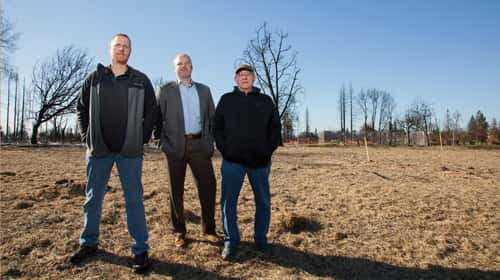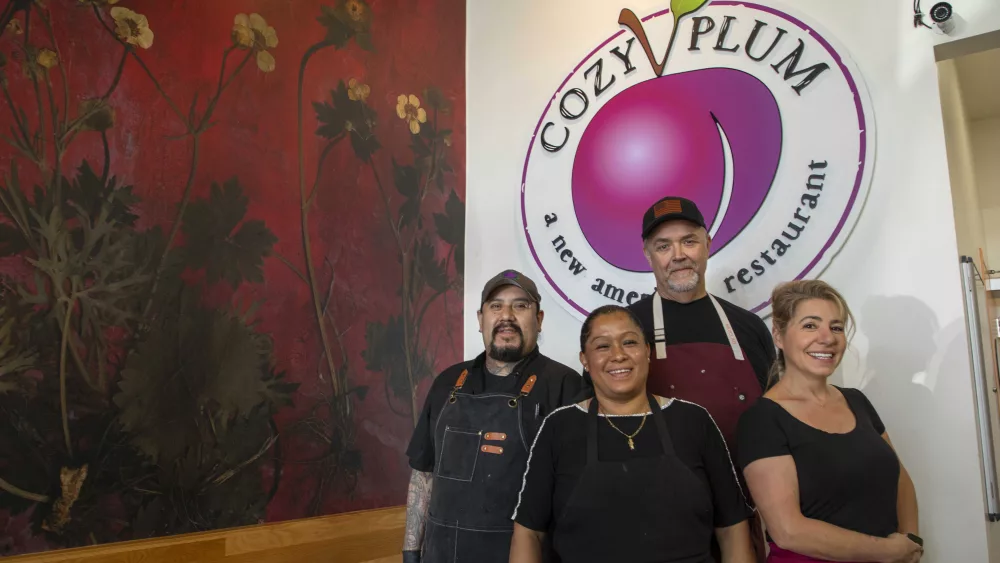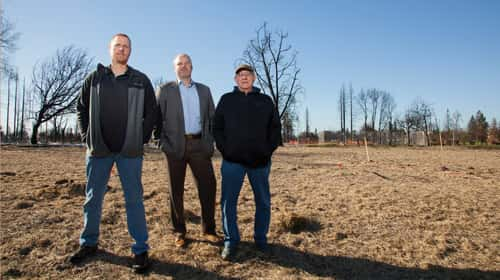
Last October, Sonoma County experienced a natural disaster of epic proportions. Many people perished when tens of thousands of acres were ravaged by a firestorm. At least 4,655 homes were destroyed by the Tubbs fire alone. In Santa Rosa’s Fountaingrove neighborhood, 1,420 homes were lost; in Coffey Park, 1,240 were reduced to ash. In addition, 109 mobile homes were destroyed, together with 209 multi-family homes.
For a county already mired in a housing shortage crisis, the loss of so many homes makes the rebuilding challenge even greater. “We are not forgetting that we had a serious housing need before we lost thousands of homes,” says Santa Rosa Mayor Chris Coursey. “My priorities post-fire haven’t changed. Before October, we were in discussions about building 5,000 new housing units by 2024. That plan has not gone away.”
The immediate need, however, is to replace what was lost. To make it easier for thousands of homeowners to jumpstart the process of rebuilding their homes, Santa Rosa opened the Resilient City Rebuilding Center on November 28. The city signed a $9 million contract to fund and staff the center for two years, with the goal to create a user-friendly office for people unfamiliar with the perplexing permitting process, and to move that process along quickly.
“The Rebuilding Center is designed to help victims of the fires navigate the system, from debris removal to final inspections,” says Coursey. “The staff is cognizant that these homeowners are under a huge amount of stress, forced to make many big decisions every day. It can be mindboggling.”
Accessing disaster relief funds
 The price tag for the new center will be paid by the property owners in the form of building permit costs and other fees, says Coursey. “The fees for a building permit, a plan check, and inspections are not being waived for these fire rebuilds, and those can run from $5,000 to $10,000 per house. Yet some of the big costs of building a house nowadays are impact fees and water and sewer hookups, which under normal circumstances can cost $40,000 to $60,000 per house. Those fees (for impact and hookups) are being waived entirely for fire rebuilds.”
The price tag for the new center will be paid by the property owners in the form of building permit costs and other fees, says Coursey. “The fees for a building permit, a plan check, and inspections are not being waived for these fire rebuilds, and those can run from $5,000 to $10,000 per house. Yet some of the big costs of building a house nowadays are impact fees and water and sewer hookups, which under normal circumstances can cost $40,000 to $60,000 per house. Those fees (for impact and hookups) are being waived entirely for fire rebuilds.”
In early January, Coursey and other community leaders met in Santa Rosa with Department of Homeland Security Secretary Kirstjen Nielsen, who also oversees FEMA, during her brief visit to inspect the fire destruction. “We’ve had several visits from high-powered officials from Washington, D.C., and these meetings pretty much all go the same way,” says Coursey. “We go around the table and each person gets a couple of minutes to state their case. It’s not a deep dive into the issues you really need to talk about.
“I did impress upon Secretary Nielsen that the city supports the 90 percent federal/10 percent state and local reimbursement formula, and I asked her not to use the 75 percent/25 percent formula for Santa Rosa. Her job is to help communities recover from disasters, and she said all the right things. But she is pulled in many directions.”
Rebuilding Center
 For most homeowners facing a rebuild, there are two paths to choose from, says David Guhin, assistant city manager and director of planning and development for the City of Santa Rosa. “One path is to work with a developer who is building a master-plan development, where the homeowner selects a pre-approved floor plan. The other path is to hire an architect to do a custom-build project. So far we are seeing a mix of these two options coming in for approval.”
For most homeowners facing a rebuild, there are two paths to choose from, says David Guhin, assistant city manager and director of planning and development for the City of Santa Rosa. “One path is to work with a developer who is building a master-plan development, where the homeowner selects a pre-approved floor plan. The other path is to hire an architect to do a custom-build project. So far we are seeing a mix of these two options coming in for approval.”
Developers are seeking economies of scale, says Guhin, to keep prices lower. “So each developer would bring in a foundation crew, a framing crew, a drywall crew, and so on, to work as quickly as possible on multiple houses.”
In late January, more than 20 permits had been processed through the city’s Resilient City Rebuilding Center, but Guhin anticipated that figure would rapidly increase as the weeks go by. “We’ve seen more than 1,500 property owners, contractors and developers come through the new center, and we’ve also had more than 2,100 phone calls since we opened at the end of November. Our work has shifted from general inquiries to answering more specific questions. When we first opened, the most common question was, ‘Where do we start?’ Now people have focused issues, such as how to get a temporary power connection to their lot, or how to deal with a tree on their property that needs to be cut down in addition to submitting plans for their new home. We are seeing first plan checks on new homes being turned around within five days. That’s the level of service we promised our community, and will continue to strive for as we look to rebuild all 3,000 lost homes.”
“A big concern of ours is misinformation,” says Raissa de la Rosa, economic development manager for the City of Santa Rosa. “Our intention is to rebuild the community and the houses of our residents as soon as possible. From a business standpoint, we need to retain and regain our workforce. If we don’t do this quickly, it will have a long-term effect.”
New building codes
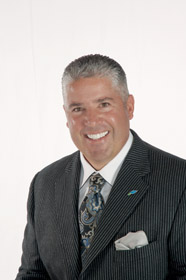 The lost homes in the Coffey Park and Mark West Estates neighborhoods were built several decades ago, and state building code has evolved many times since. The rebuilds must comply with today’s codes and ordinances, including using materials designed for greater energy conservation and fire resistance, and with an interior fire sprinkler system.
The lost homes in the Coffey Park and Mark West Estates neighborhoods were built several decades ago, and state building code has evolved many times since. The rebuilds must comply with today’s codes and ordinances, including using materials designed for greater energy conservation and fire resistance, and with an interior fire sprinkler system.
“Current code for the city and county is mandatory fire sprinklers on new residential construction,” explains John Farrow, president and chief executive officer of Farrow Commercial Construction in Santa Rosa. “These are whole-house interior sprinklers that are reliable for extinguishing an indoor fire, but unfortunately they don’t protect against an outside fire. The fire department inspects the sprinkler system during the construction phase, and it generally doesn’t require another inspection.”
But just getting a rebuild off the ground, literally, means first determining if an existing foundation can be reused. “An existing foundation has to undergo a suitability evaluation by a structural engineer,” says Guhin. “There are usually under-slab systems within that foundation, too, and they must be suitable for reuse. What we found in the days right after the Tubbs fire was that it burned so hot, many foundations couldn’t be salvaged.”
There are different types of foundations, and the fires burned differently from area to area, says de la Rosa. In the aftermath, the city discovered many nuances such as that––the way fire damage to foundations varied from place to place.
Soil conditions are the first step in determining the type, size and structural requirements of a foundation, says Farrow. “We are finding in parts of Mark West Estates that soil liquefaction is an issue. Where those soil conditions exists, foundations will need to be beefed up, excavating the footings a foot or deeper into the ground than before, and we might use additional methods to create more stability.” In late January, Farrow’s company had signed several letters of intent to rebuild homes in Mark West Estates and also in the Fountaingrove neighborhood. He predicts his company will be in construction on as many as 100 rebuilds before the end of this year.
“Opening the Resilient City Rebuilding Center has been so valuable, not only as a point of entry to our residents seeking to rebuild, but for us, too, in how much we are learning, so know better how to respond. As we become better versed on such topics as insurance needs, for instance, we can help those affected,” says de la Rosa. “Our method in assisting fire victims from becoming overwhelmed by the rebuilding process is to recommend they start with bite-sized chunks of information. We are trying to provide handouts and information on our website that is laid out in steps, showing them the first five things they have to do, then the next five.”
County fees and rebuilds
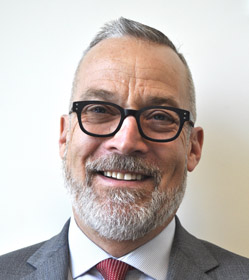 “The county has created a flat-fee schedule for permits and fees, together with quick turnaround times,” says Tennis Wick, director of the permit and resource management department of the County of Sonoma (also called Permit Sonoma). “There’s a penalty built into the fee schedule so that contractors will meet their time milestones on rebuilds.”
“The county has created a flat-fee schedule for permits and fees, together with quick turnaround times,” says Tennis Wick, director of the permit and resource management department of the County of Sonoma (also called Permit Sonoma). “There’s a penalty built into the fee schedule so that contractors will meet their time milestones on rebuilds.”
The county selected West Coast Code Consultants (WC3) to staff the Resiliency Permit Center, which is exclusively dedicated to reconstruction permitting needs. WC3 has extensive experience in California disaster recovery, including fires in sister counties.
Permit Sonoma, according to Wick, is the second most important economic development agency in county government. “Our business was already at a record level on October 7, two days before we lost so many homes, so we also need to stay focused on entitling businesses and residential construction outside the fire zones.”
On February 13, the county opened the same type of resiliency permitting office as the city opened in November. Called the Resiliency Permit Center, it will assist homeowners of the approximately 3,000 residential properties destroyed or damaged in unincorporated areas of the county. “This special office will handle all the steps of rebuilding a home, from intake to final inspections, exclusively for fire victims,” explains Wick.
Complicating some of the rebuilds, particularly in rural hillside areas, are the 72 private bridges that need various levels of reconstruction, according to Wick. The lost homes on the wrong side of those burned bridges cannot be rebuilt until the bridges themselves are rebuilt. In late January, 11 permits had been issued to repair private bridges, but Wick was anticipating many more of those permits would be granted within a few weeks.
Worker and material shortages
Even as contractors are discussing floor plans and designs with fire victims, shortages of construction workers and building materials might delay some rebuilds. “Our company has secured commitments from local subtrades and suppliers to handle the amount of work we are anticipating,” says Farrow. “And because there is a shortage of qualified architects and engineers to manage the bandwidth required, we purchased an architectural/design firm [Architectural Concepts Inc. in San Diego] to ensure that our Sonoma County clients will have access to services they need.”
A run on building materials could also create problems, together with significant increases in the cost of wood, says Farrow. “That’s why we are suggesting alternate building materials such as steel and structurally insulated panel homes, or SIPs, as they are known. Steel homes may be more economical than wood, and steel makes for a sturdier and more fire-resistant house.”
Farrow says fire victims walk into his company’s office nearly every day, wanting to discuss their options for a new home. “All in all, the people we meet are optimistic. Most have a place to live for the time being and have enough insurance to rebuild, so they are trying to move on with their lives.”
Moving forward
 James Gore, District 4 county supervisor, says one of the best things to come out of the disaster is watching how homeowners from the affected neighborhoods in his district have banded together for the greater good of their neighborhoods. (Gore’s district includes Coffey Park and the Larkfield/Wikiup area.) “These neighbors who maybe didn’t know each other before the fires have now formed groups to show their strength. There are at least 30 block captains for the Coffey Park neighborhood alone. It’s been beautiful to watch—even the regional head of FEMA told me he’s never seen such constructive community mobilizing following a disaster.”
James Gore, District 4 county supervisor, says one of the best things to come out of the disaster is watching how homeowners from the affected neighborhoods in his district have banded together for the greater good of their neighborhoods. (Gore’s district includes Coffey Park and the Larkfield/Wikiup area.) “These neighbors who maybe didn’t know each other before the fires have now formed groups to show their strength. There are at least 30 block captains for the Coffey Park neighborhood alone. It’s been beautiful to watch—even the regional head of FEMA told me he’s never seen such constructive community mobilizing following a disaster.”
Still, Gore warns that Sonoma County has been thrust into “a natural disaster-induced recession. So we must go forward, not backward.”
Adding a significant number of housing units after replacing our lost neighborhoods is crucial, he adds. “This is not a county that will support sprawl. We will be an in-fill, slow-grow county. But we need to dramatically increase our housing and, let’s get real, we need a skyline in Santa Rosa and other cities.”
Rebuilding Centers
To expedite the permitting and rebuilding process for homeowners who lost their properties to the wildfires last October, the City of Santa Rosa and County of Sonoma have opened two special centers designed to help them quickly replace their homes.
The Resilient City Rebuilding Center is located in Room 6 at Santa Rosa City Hall, 100 Santa Rosa Avenue. The center is open Monday through Friday from 8 a.m. to 5 p.m., exclusively to assist those whose homes in Santa Rosa were destroyed or damaged by the wildfires. A comprehensive website (www.srcity.org/rebuild) was also created to answer their questions, provide step-by-step guides, and supply other resources to help with rebuilds. (The city’s existing permit office, in Room 3 at City Hall, is continuing to handle all non-fire-related permitting business.)
For those who need to rebuild, the City of Santa Rosa has created new policies, which include:
• Expediting the review process for hillside development and design review.
• Waiving fees for discretionary planning, demolition and temporary housing permits.
• Allowing residents to live in temporary housing units––such as manufactured, tiny homes, and RVs––on their properties while rebuilding.
• Allowing residents to build detached accessory dwelling units (ADUs) to live in while they are rebuilding their main residence, and offering incentives for such units.
In late January, the County of Sonoma’s Resiliency Permit Center was on track to open on February 13 at 2550 Ventura Avenue in the county administration complex. It will be found just outside the existing Permit Sonoma office (also known as the Permit and Resource Management Department). At a special meeting of the Board of Supervisors, the county signed off on a three-year contract with an outside firm to accelerate the permitting process for homeowners whose properties were destroyed or damaged in unincorporated areas of the county. Plans call for applications to be processed within five business days or less for plan checks, and three business days for rechecks. Rebuild permits will be on a reduced fee schedule and based on the individual size of each structure. The center’s hours had not been determined at press time.
“We want to be a partner to fire survivors, not a roadblock,” said Supervisor James Gore in a prepared statement. “The Resiliency Permit Center will help people rebuild quickly and efficiently, cutting the red tape and getting people back on their feet as soon as possible.”
Insurance drives decisions
Earlier this year, the removal of fire debris was progressing rapidly throughout the wildfire burn zones in Sonoma County. Currently, 90 percent of the debris was expected to be removed countywide by the end of February.
“The debris removal process will be imperfect, but it will get done, and then we move forward on the permitting for rebuilds,” said James Gore, chairman of the county board of supervisors, in late January.
Concurrent with debris removal, Gore says, has been the complicated insurance process for affected homeowners, many of whom are bogged down with completing whole-house inventories before rebuild values can be established.
“It’s not going to be a sprint to figure out every insurance situation, and insurance will drive the decisions for each rebuild,” he says. “You can randomly talk to 100 people who lost their homes, and maybe 25 percent are happy with how their insurance company has handled their situation. Another 30 percent say they are concerned that their insurer seems to be taking a long time to work out details. Then you have another 30 percent who say the insurance process isn’t going well for them at all, and the last 15 percent are so frustrated with their insurer they’re ready to go to court.”
Demographics will also drive many of the decisions to rebuild, Gore says. “In the Fountaingrove neighborhood, where some homeowners are selling their lots, I overheard a real estate agent say that some of them are retired, older, and they just don’t want to spend the ‘head space’ of four or five years to rebuild. They will go buy another home.”



